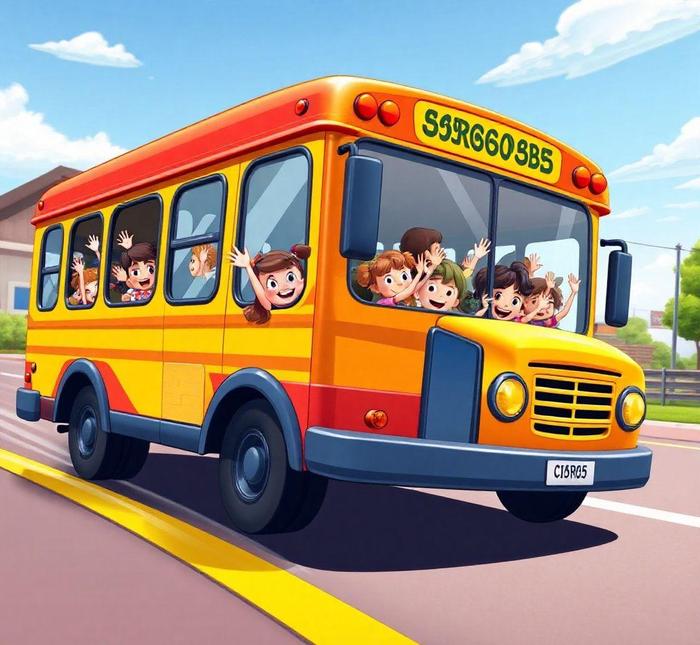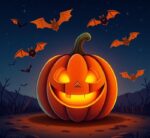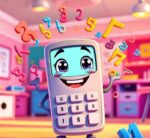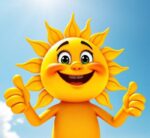- You are here:
- Home »
- words
- » Kindergarten Words That Start With O [LIST]

Kindergarten Words That Start With O [LIST]
Teaching young children to recognize and use words that start with specific letters is an essential part of early literacy development. For kindergarten students, learning words that begin with the letter ‘O’ can be both fun and educational. These words help build vocabulary, improve phonemic awareness, and lay the foundation for future reading and writing skills. By introducing ‘O’ words through interactive games, flashcards, and engaging activities, educators can make the learning process enjoyable and memorable.
In this article, we will explore a list of kindergarten words that start with ‘O’, providing examples that are simple enough for young learners to grasp. These words cover a wide range of categories, from animals and objects to colors and emotions, offering a well-rounded selection for teachers and parents to incorporate into their teaching plans. By learning and using these words in context, children will not only expand their vocabulary but also enhance their understanding of language in a meaningful and age-appropriate way.
Kindergarten Words That Start With O
1. octopus
An octopus is a sea creature with eight long arms. It is known for its ability to change color and squirt ink.
Examples
- The octopus has eight legs.
- I saw an octopus at the aquarium today.
2. orange
An orange is a round fruit that is orange in color. It is a popular snack and is rich in vitamin C.
Examples
- I like to eat oranges for breakfast.
- The orange is sweet and juicy.
3. owl
An owl is a bird with large eyes and a flat face, known for its ability to see in the dark and its hooting sound.
Examples
- The owl is a nocturnal bird.
- Owls can turn their heads almost completely around.
4. ocean
The ocean is a large body of saltwater that covers most of the Earth’s surface, home to many sea creatures.
Examples
- The ocean is full of fish and other animals.
- We went to the beach and saw the ocean stretching far into the horizon.
5. on
The word ‘on’ refers to something being placed or located on top of something else.
Examples
- The book is on the table.
- Put your shoes on before going outside.
6. off
‘Off’ is used to indicate that something is no longer operating or is in a stopped state.
Examples
- The light is off.
- Please turn off the TV when you are done.
7. open
To ‘open’ means to make something accessible or allow entry, like a door or a book.
Examples
- The door is open.
- Please open the window to let some air in.
8. over
‘Over’ refers to something being above or covering something else.
Examples
- The cat jumped over the fence.
- We put the blanket over the bed.
9. old
‘Old’ describes something that has existed for a long time or has been used for a long time.
Examples
- The old tree has been standing for many years.
- My grandmother is very old but still active.
10. one
‘One’ refers to the number 1 and is used when talking about a single object or thing.
Examples
- I have one apple.
- There is only one pencil left.
11. out
‘Out’ means moving or being outside of a place, like a house or a room.
Examples
- Let’s go out to play.
- She went out to get some fresh air.
12. oink
‘Oink’ is the sound that a pig makes.
Examples
- The pig went oink, oink.
- We heard the pig oink loudly at the farm.
13. oatmeal
Oatmeal is a type of food made from oats, commonly eaten for breakfast.
Examples
- I like to eat oatmeal with fruit for breakfast.
- Oatmeal is healthy and keeps me full for a long time.
14. outdoor
Outdoor refers to activities that are done outside, like playing or hiking.
Examples
- We like to play outdoor games like soccer.
- Outdoor activities are fun when the weather is nice.
15. octagon
An octagon is a shape with eight sides and eight angles.
Examples
- An octagon has eight sides.
- The stop sign is shaped like an octagon.
16. outside
Outside refers to the area that is not inside a building or structure.
Examples
- The children are playing outside in the yard.
- We should go outside and enjoy the sunshine.
17. oven
An oven is a kitchen appliance used for baking, roasting, or heating food.
Examples
- The cake is baking in the oven.
- Mom put the pizza in the oven to cook.
18. odd
‘Odd’ describes something that is strange, unusual, or different from what is expected.
Examples
- That is an odd looking chair.
- It’s odd that we haven’t heard from him yet.
19. oar
An oar is a long pole with a blade at the end, used to row or steer a boat.
Examples
- The rower uses an oar to move the boat.
- I saw the man paddling with an oar in the lake.
20. oil
Oil is a slippery liquid used in cooking or machinery.
Examples
- The car needs oil to run smoothly.
- I used olive oil to cook the pasta.
21. onion
An onion is a vegetable with a strong flavor and smell, often used in cooking.
Examples
- I chopped the onion for the salad.
- The onion made my eyes water while I was cutting it.
22. orchard
An orchard is a place where fruit trees are grown, usually for harvesting.
Examples
- The orchard has many apple trees.
- We went to the orchard to pick peaches.
23. oath
An oath is a serious promise or vow to do something or tell the truth.
Examples
- He took an oath to be honest.
- The president raised his hand and took the oath of office.
24. oval
An oval is a shape that looks like an elongated circle, like an egg or a rugby ball.
Examples
- The ball is oval-shaped.
- The table has an oval top.
25. officer
An officer is a person in a position of authority, such as a police officer or a military officer.
Examples
- The officer helped us when we were lost.
- The police officer asked for our identification.
26. outfit
An outfit refers to a set of clothes worn together, often for a special occasion.
Examples
- She wore a beautiful outfit to the party.
- I like your outfit. It looks great on you.
27. oxygen
Oxygen is a gas that is essential for breathing and is found in the air.
Examples
- We breathe in oxygen to live.
- Oxygen is needed by all animals to survive.
28. object
An object is any item or thing that can be seen or touched.
Examples
- That object is very shiny.
- We found a strange object in the garden.
29. or
‘Or’ is a word used to indicate a choice between two or more things.
Examples
- Do you want tea or coffee?
- You can wear the red shirt or the blue one.
30. obstacle
An obstacle is something that blocks or makes it harder to achieve something.
Examples
- The runner jumped over the obstacle.
- There was a big obstacle in the path that we had to move.
Historical Context

The process of introducing young children to words that start with specific letters, such as "O," can seem like a modern educational technique, but it has deep historical roots in literacy and language development. The idea of focusing on letters and their corresponding words is tied to the centuries-old tradition of phonics, a method of teaching reading by correlating sounds with letters. The historical context of early education has evolved significantly, especially when looking at the development of phonetics and alphabet-based teaching systems.
In ancient civilizations, including Egypt, Greece, and Rome, written language was first formalized, but it was largely the realm of scholars and scribes. As literacy spread, the focus gradually shifted to making reading and writing more accessible to children. By the Middle Ages, education in Europe was typically reserved for the elite, and it wasn’t until the Renaissance and the advent of the printing press that educational materials for children began to be produced on a wide scale. This marked the beginning of a structured approach to teaching language.
The development of the alphabet as we know it today was a long process, but by the time the 19th century rolled around, educational theories began to emphasize early literacy, leading to the modern kindergarten system. Friedrich Froebel, a German educator in the early 1800s, is often credited with founding the concept of "kindergarten" (literally “children’s garden”), where children could engage with letters, sounds, and words in playful ways, setting the foundation for today’s phonics-based education. Words starting with different letters, such as "O," were selected for their simple pronunciation and distinct sounds, making them ideal for young learners to grasp at an early age.
The use of words starting with "O" has a particular resonance within this historical context. Many words associated with "O" are easily recognizable and concrete, often representing tangible objects or common actions that children encounter daily. This historical trend of selecting simple, meaningful words for early learning persists in today’s educational frameworks.
Word Origins And Etymology
The exploration of words that start with "O" offers a fascinating journey into the etymology of the English language, revealing how words evolved over time. Many kindergarten words that start with "O" come from Latin and Greek, while others are derived from Old English, Germanic, or other European languages.
Let’s begin with "orange," a classic word children often encounter early on. The word "orange" traces its origins to the Old French word orenge, which came from the Arabic nāranj, derived from the Persian nārang, which in turn likely originated from the Sanskrit nāraṅga. The fruit, and consequently the color, were introduced to Europe through trade with the Middle East and Asia, and its name evolved as it traveled through different languages.
Another common "O" word for kindergarten students is "octopus." This word comes from the Greek októpus, meaning "eight foot," from októ (eight) and pous (foot). The word "octopus" was adopted into English in the 18th century as interest in marine life and scientific classification grew. Interestingly, the plural form "octopuses" is more widely accepted in modern English than the Latin-inspired "octopi," even though the word comes from Greek, not Latin.
The word "owl" is another example that has interesting linguistic roots. It comes from Old English ūle, which is related to the Proto-Germanic ōwla, and can be traced back to the Proto-Indo-European root h₂u̯l̥nō, meaning "bird of night." The owl’s long-standing presence in folklore and mythology as a symbol of wisdom and mystery likely contributed to its enduring place in language and culture.
Even words that might seem simple, such as "open" or "over," carry rich histories that reflect the development of English itself. "Open" comes from the Old English openian, which was derived from the Proto-Germanic upan and related to the Proto-Indo-European root up-, meaning "up" or "higher." Meanwhile, "over" originated from the Old English ofer, which has cognates in many other Germanic languages.
These examples show how kindergarten words that start with "O" are not just simple terms for objects, animals, or actions; they carry centuries of linguistic history and cultural exchange, providing young learners with a rich vocabulary from diverse linguistic traditions.
Common Misconceptions
When it comes to teaching young children words that start with the letter "O," several common misconceptions can arise—both in the teaching process and in the children’s understanding of the words themselves.
One of the first misconceptions is related to pronunciation. The letter "O" can represent a variety of vowel sounds, which can be confusing for beginners. For instance, in words like "octopus" or "open," the "O" has the long /oʊ/ sound (as in "go"), while in "on" or "off," it has a short /ɒ/ or /ɑ/ sound (as in "dog"). These differences can cause frustration for young learners trying to connect the letter to consistent sounds. The variation in vowel sounds, particularly in English, often leads to confusion as the same letter represents different sounds depending on the word. Teachers need to emphasize this variability, reassuring students that it’s a normal part of learning English.
Another misconception is that words that start with "O" are always related to objects or physical things. While many of the most common words—like "orange," "octopus," or "owl"—are tangible, the letter "O" also begins a variety of abstract or action-based words, such as "over," "open," "offer," and "omit." This can sometimes be confusing for young learners who expect all "O" words to refer to concrete items they can touch or see. Teaching them that language also includes verbs and prepositions that don’t have a physical form helps children understand the versatility of the letter "O."
Additionally, some students might mistakenly assume that every word starting with "O" follows the same pattern, which isn’t the case. The word "off," for example, is often incorrectly pronounced or understood by children due to its distinct short vowel sound and irregular usage. Similarly, the word "one," while starting with the same letter, is often a tricky one for children because it doesn’t follow the typical vowel pronunciation and requires specific memorization.
Finally, there is a common misconception that the quantity of "O" words children need to learn is limited. In reality, words beginning with "O" are deeply integrated into everyday language, from time-related words like "on," "over," and "once" to spatial terms like "out" and "outside," as well as verbs like "open" and "offer." Teachers can enrich children’s vocabulary by showing them that the letter "O" is not just for simple nouns and objects—it can also extend into the realms of actions, directions, and abstract concepts.
Conclusion
In conclusion, kindergarten words that start with "O" represent more than just basic vocabulary; they offer a window into the evolution of language and the rich tapestry of cultural and linguistic history that informs our modern lexicon. From the roots of phonics and early educational theories to the complex etymology behind seemingly simple words, "O" words provide young learners with an accessible and varied vocabulary to explore. Understanding the historical context and word origins helps children grasp the full depth of the language they’re acquiring, and overcoming common misconceptions helps them develop a more accurate understanding of both language structure and pronunciation.
Through careful teaching and playful learning, words that start with "O" can help children build a foundation for a lifelong journey of reading and language exploration. The process not only fosters literacy but also connects children to a broader historical and cultural narrative, making the act of learning far more meaningful and enriching.








